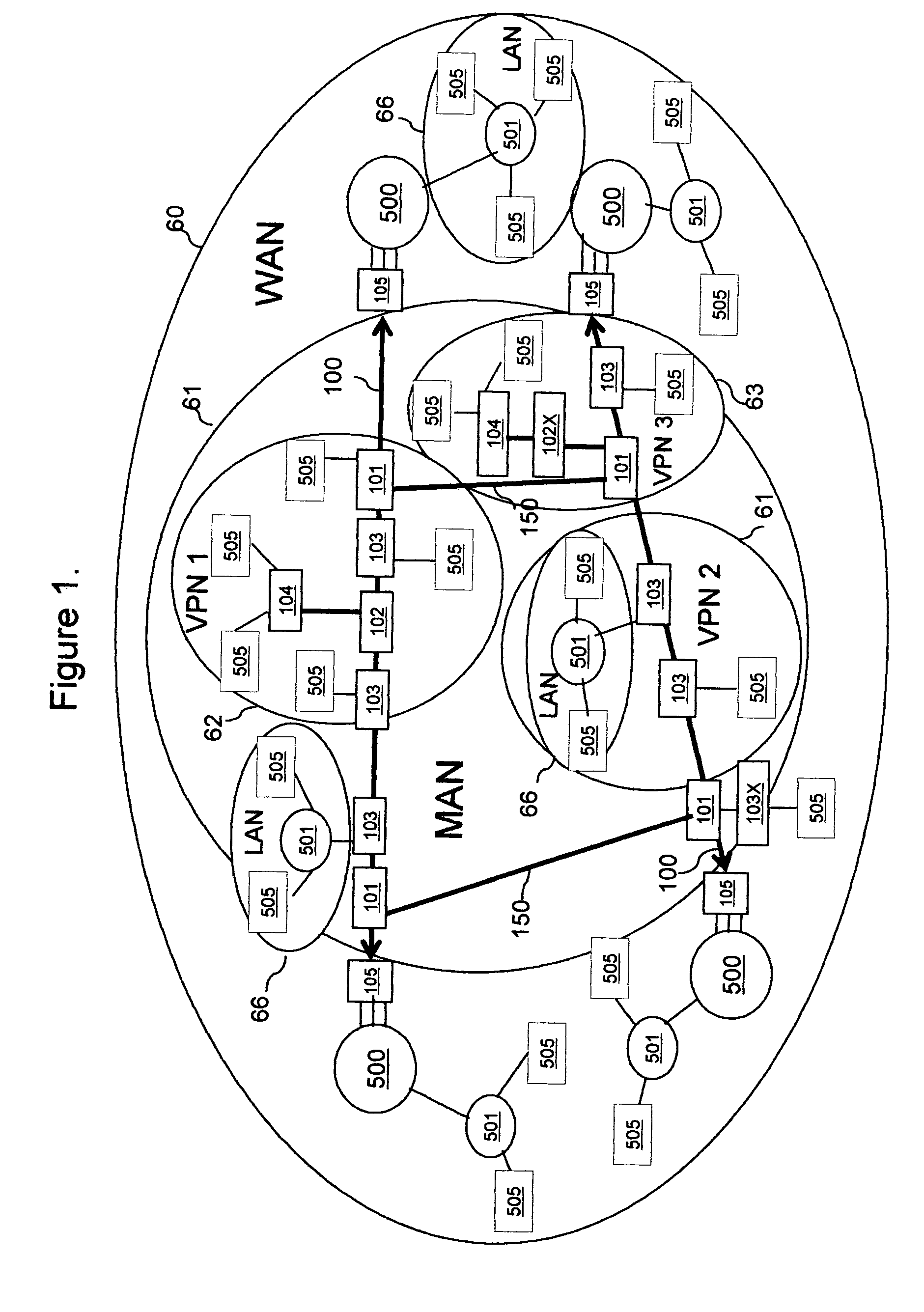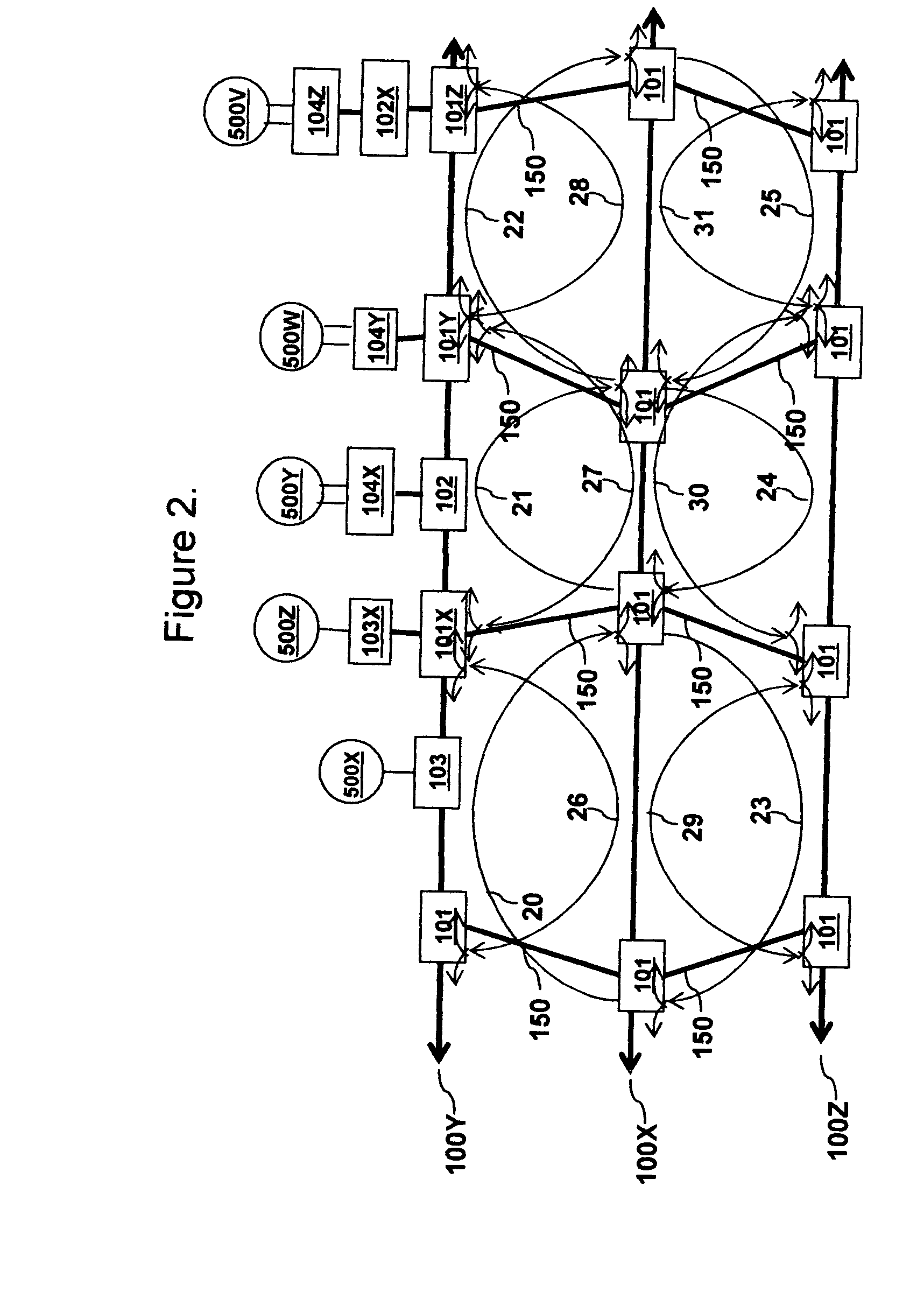Process of optical WDM bus networking with DWDM expansion for the method of protected point to point, point to multipoint and broadcast connections
a technology of optical wdm bus and expansion method, applied in the field of optical communication, can solve the problems of high startup cost, high capacity dwdm, and inability of catv, san and isp networking to create affordable and scalable services, and achieve the effect of low start-up cos
- Summary
- Abstract
- Description
- Claims
- Application Information
AI Technical Summary
Benefits of technology
Problems solved by technology
Method used
Image
Examples
Embodiment Construction
[0034] Detailed descriptions of the prior art preferred embodiments and the invented preferred embodiments are provided herein. It is to be understood, however, that the present invention may be embodied in various forms. Therefore, specific details disclosed herein are not to be interpreted as limiting, but rather as a basis for the claims and as a representative basis for teaching one skilled in the art to employ the present invention in virtually any appropriately detailed system, structure or manner.
[0035] Turning now to the drawings, FIG. 1 shows an example of networking of Local (LAN), Metro (MAN) and Wide (WAN) Area Networks with the invented process of all-optical multi-bus networking for the method of mesh protected Point-To-Point, Point-To-Multipoint and Broadcast Access and Metro networking. On FIG. 1, pluralities of the prior art Terminal Equipments 505 in the LAN networks 66 are connected to the plurality of Terminal Equipments 505 in the WAN network 60 through the pri...
PUM
 Login to View More
Login to View More Abstract
Description
Claims
Application Information
 Login to View More
Login to View More - R&D
- Intellectual Property
- Life Sciences
- Materials
- Tech Scout
- Unparalleled Data Quality
- Higher Quality Content
- 60% Fewer Hallucinations
Browse by: Latest US Patents, China's latest patents, Technical Efficacy Thesaurus, Application Domain, Technology Topic, Popular Technical Reports.
© 2025 PatSnap. All rights reserved.Legal|Privacy policy|Modern Slavery Act Transparency Statement|Sitemap|About US| Contact US: help@patsnap.com



